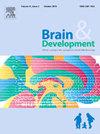Recurrence of Tic disorders in children after medication withdrawal: A cohort study on long-term outcomes
IF 1.4
4区 医学
Q4 CLINICAL NEUROLOGY
引用次数: 0
Abstract
Aim
To evaluate the relapse rate in children with tic disorders following medication withdrawal and to identify the risk factors associated with tic recurrence.
Methods
This prospective cohort study enrolled 387 children who had recently discontinued medication and had been tic-free for at least 3 months. Participants were followed monthly for 12 months to monitor tic relapse. The primary outcome was the time from medication discontinuation to tic recurrence, while the secondary outcome was the characteristics of the recurrence. Cox regression models were used to identify prognostic factors associated with relapse.
Results
During the 12-month follow-up, 235 participants (61 %) experienced tic relapse. Among these, 120 participants (51 %) had a recurrence of their original tic symptoms, 75 (32 %) developed new symptoms alongside their original tics, and 39 (17 %) presented with entirely new tic symptoms. Significant prognostic factors for tic recurrence included treatment duration, Yale Global Tic Severity Scale score at the worst-ever phase, average daily screen time, negative emotional stimuli, and snack consumption.
Conclusion
Tic recurrence following medication discontinuation is common in children with tic disorders and is associated with several modifiable prognostic factors. Clinicians should address these predictors to develop more effective prevention strategies and reduce tic recurrence.
儿童停药后抽动障碍复发:一项长期结果的队列研究
目的评价抽动障碍患儿停药后的复发率,探讨抽动障碍复发的相关危险因素。方法本前瞻性队列研究纳入了387名最近停药且至少3个月无抽搐的儿童。参与者每月随访12个月,监测抽动症复发。主要转归是停药到抽动症复发的时间,次要转归是复发的特征。采用Cox回归模型确定与复发相关的预后因素。结果在12个月的随访中,235名参与者(61%)出现抽动症复发。其中,120名参与者(51%)有原始抽动症状复发,75名(32%)在原始抽动的同时出现了新的症状,39名(17%)出现了全新的抽动症状。抽动症复发的重要预后因素包括治疗时间、最差阶段的耶鲁全球抽动严重程度量表评分、平均每日屏幕时间、负面情绪刺激和零食摄入量。结论抽动障碍患儿停药后抽动复发是常见的,并与几个可改变的预后因素有关。临床医生应该解决这些预测因素,以制定更有效的预防策略,减少抽动症复发。
本文章由计算机程序翻译,如有差异,请以英文原文为准。
求助全文
约1分钟内获得全文
求助全文
来源期刊

Brain & Development
医学-临床神经学
CiteScore
3.60
自引率
0.00%
发文量
153
审稿时长
50 days
期刊介绍:
Brain and Development (ISSN 0387-7604) is the Official Journal of the Japanese Society of Child Neurology, and is aimed to promote clinical child neurology and developmental neuroscience.
The journal is devoted to publishing Review Articles, Full Length Original Papers, Case Reports and Letters to the Editor in the field of Child Neurology and related sciences. Proceedings of meetings, and professional announcements will be published at the Editor''s discretion. Letters concerning articles published in Brain and Development and other relevant issues are also welcome.
 求助内容:
求助内容: 应助结果提醒方式:
应助结果提醒方式:


